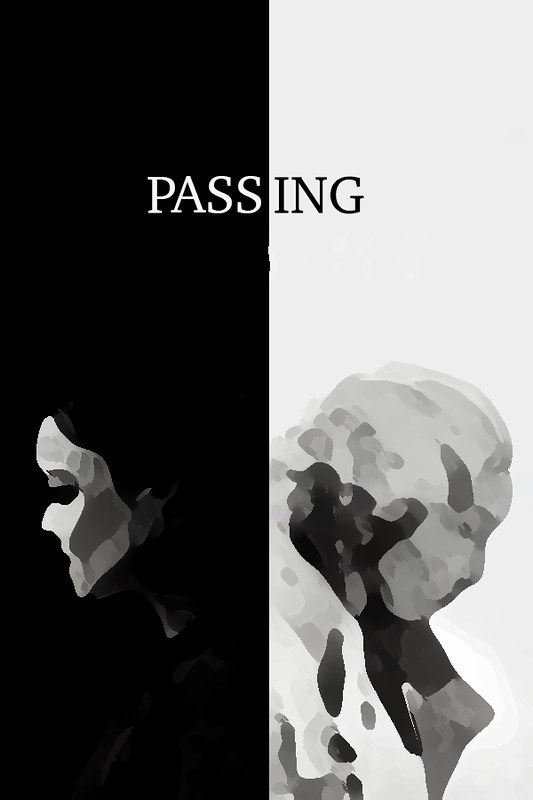Rebecca Hall’s “Passing,” released on Oct. 27 2021, follows the path of reconnection of two childhood friends, Irene Redfield (Tessa Thompson) and Clare Kendry (Ruth Negga), who holds a secret that disturbs the values Irene holds.
Rebecca Hall’s “Passing” Portrays The Tragedy Of Identity and Change
Set in New York City in the 1920s, Irene Redfield, the main character in the emotional drama “Passing” has everything that would bring her joy. A mother of two bright boys, a husband who’s a doctor, a luxurious row house, and a mindset thriving on independence. Everything around her is perfect, all set out in her manner and nothing out of the ordinary. Her life built on perfection was quick to tremble when it came to the face of change: the beautiful, pale, and feminine face of change.
Rebecca Hall’s “Passing”, released on Oct. 27, 2021, follows the path of reconnection of two childhood friends, Irene Redfield (Tessa Thompson) and Clare Kendry (Ruth Negga), who holds a secret that disturbs the values Irene holds. Clare, like a reflection of Irene, is a light-skinned African American surviving in the racist and prejudiced society of 1920’s Harlem, New York City. Using her golden, blonde hair and her white features, Clare lives her life “passing” as a white woman.
Based on Nella Larson’s 1929 novel, “Passing” captures the delicate, enigmatic structure of identity, race, and acceptance. The sweltering, blazing summer heat of Harlem, New York leads to Irene and Clare taking shade in an uptown cafe, Drayton. Hiding behind her flower hat, Irene barely recognizes Clare through her appearance until she introduces herself to Irene. From her first five minutes of screen time, Clare takes center stage with her bold mannerisms and smooth-talking. Ruth Negga perfectly expresses Clare’s foreign to her roots, as her somewhat rude remarks and overly confident posture display a battling mind.
As the two friends talk through their past, Clare invites Irene over to a suite to cool down and to provide company for her. Though the suite does not serve its purpose of cooling down, it instead belies the dreary and dark atmosphere of Clare’s life.
The film is completely shot in black and white and has a 4:3 aspect ratio, truly capturing the vintage setting of the story. The euphoric and dreamy atmosphere created by the shifts in tone of the black and white illuminates the mindset of the past. The filter allows the viewer to highlight the differences between Clare and Irene, spotlighting the difference in the hues of their skin tones. The movie filmed in a vintage ratio size allows the audience to look closer at the facial expressions of each character, subtly dramatizing them in a way. When put together, the whole movie feels like a deception. While the visuals are very striking, blurring the characters and the setting into a dystopian landscape, the plot is realistic and natural.
When invited into the suite, Irene gets entwined deeper into Clare’s life and story, even getting the chance to meet Clare’s husband, John, who is worlds apart from her, including skin color and mindset. John, a wealthy businessman reciprocates the views of people from his status in the 1920s, is deeply invested in their wealth and privilege. John’s flaw is that he is not aware of his wife’s racial background and only knows her on the surface level; he only sees her for her appearance as white. Not only that, he prefers to call Clare a racial slur because of her skin darkening from when they first got married, which Irene couldn’t do anything in response to but break down into a hysterical fit of laughter.
The movie is very persistent in showing change and contrast. The reserved, brusque Irene and the dramatic, spirited Clare are already strikingly different on their own and the story focuses on showing this. When Irene and Clare start getting closer and their friendship gets stronger, there is an abrupt icy change when Clare leaves. Just as the seasons change from Fall to Winter, their friendship also turns cold, as Irene’s view towards Clare turns to a desire.
Hall portrays the dark emotions of the characters beautifully, in its rawest form when it’s the scariest. A more invasive, disturbing hunger is seen in Irene, as she seems very focused on something that only Clare holds. Clare’s elegant beauty is illuminated, as she gets the way of people and their hearts easily, without a drop of sweat. Her looks reciprocate the gentility that white women of the past were held to. Her outward mindset, something that Irene lacks, holds her to be this very confident figure with a charismatic personality. All of this rages and boils over time in Irene’s secret glances and the quiet moments to herself in her room. A friendship, once flourishing, is slowly rotting.
“Passing” as a whole, is not just a movie but a mirage of change, growth, and identity. A film of breathtaking visuals and broken individuals, it takes the audience through a poignant ride. Sticking to the relevance of the name, it is a story about a passing friendship, passing identities, and a vision of the past
